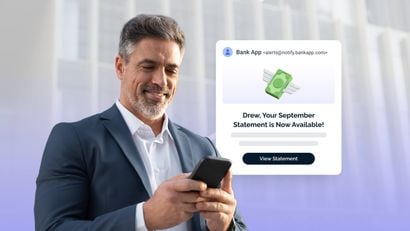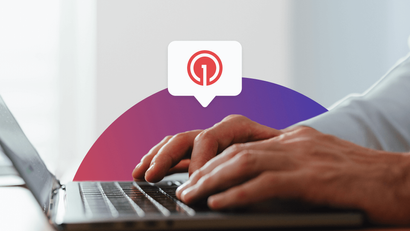Reaching your customers with the right message, at the right time, on the right channel is similar to building relationships with people in your personal life. Creating a trusted relationship with your brand across channels requires respecting your customer’s interests and catering to their preferences.
This is where both multichannel and omnichannel marketing can be relevant.
What’s the Difference Between Omnichannel and Multichannel?
Omnichannel and multichannel are similar sounding buzzwords popular in the marketing and eCommerce spaces. Both refer to the use of more than one channel or mode of communication to reach your audience.
The prefix “multi” means many, whereas the prefix “omni” means all. This small linguistic clue points to the key difference between multichannel and omnichannel messaging.
Understanding Multichannel Marketing
Multichannel messaging involves using multiple communication channels, such as mobile push notifications, email, SMS, and web push notifications, to promote your products or communicate with customers.
Multichannel marketing engages consumers across different mediums and devices to ensure that your messages are received in these different places. In 2021, it’s critical to leverage multiple channels in order to compete and deliver on customer expectations.
With this messaging approach, each channel represents a separate interaction. In other words, the way that a user interacts with one channel does not impact how you interact with them through other channels. The focus of multichannel marketing is to maximize the value of each channel, separately. Often, these channels are managed distinctly by different teams and/or in different systems. For example, your company might send a 20-percent-off discount to customers via email, SMS, and push notification.
Multichannel marketing can increase message visibility. The goal of a multichannel approach is to cast your net as wide as possible in order to maximize customer engagement. It’s a volume-based approach — more channels and more messages are the focus. With this approach, you’re sure to engage with your customers in their preferred channel.
Benefits of Multichannel Marketing
Multichannel marketing involves using multiple independent channels to interact with customers. This diverse reach allows businesses to touch a wide audience through various platforms like social media, email, websites, and more.
Furthermore, each channel in multichannel marketing can be optimized individually to suit its specific audience and purpose. This allows for a more tailored approach to each platform. Not only this, but implementing a multichannel strategy can often be quicker and more straightforward since it involves managing individual channels rather than integrating them seamlessly.
Depending on the channels selected, multichannel marketing can also be more cost-effective, especially for businesses with limited resources.
Understanding Omnichannel Marketing
Unlike multichannel messaging, which can be fragmented both for the customer and the marketer, an omnichannel marketing approach integrates communication across all customer touchpoints and views each channel interaction as part of one larger conversation. This approach seeks to create a more dynamic, personal, and unified customer journey.
Benefits of Omnichannel Marketing
Omnichannel marketing aims to provide a seamless and integrated user experience across all channels. It focuses on creating a unified customer journey, allowing customers to transition between channels effortlessly. The less friction your users experience, the less likely they are to churn!
Omnichannel marketing also ensures a consistent brand message and experience across all touchpoints. Not only is this an expectation of the modern mobile experience, but this consistency reinforces brand identity and builds customer trust over time.
Lastly, omnichannel strategies are more adaptable to the evolving landscape of customer behavior, especially as technology and consumer preferences change. As new technologies emerge, such as augmented reality, artificial intelligence, or voice-activated devices, an omnichannel strategy can seamlessly integrate these technologies across channels. This adaptability enables businesses to provide innovative and engaging experiences that align with the latest technological trends
Driving a Seamless and Consistent Customer Experience
Unified communications lead to a more connected and cohesive customer experience. With an omnichannel approach, your various channels work together to drive customers on a path to purchase.
However, a true omnichannel approach is about more than just delivering a unified digital experience across channels. It’s also about creating a journey through these integrated channels using the treasure trove of data you have across your tech stack.
For example, with a multichannel approach, your delivery app might blast the same chicken sandwich promotion to all customers — including the vegetarians — across SMS, push, and email. With an omnichannel approach, you might send the promotion as a mobile push notification and in-app message to customers who previously ordered chicken nuggets from your app. Once they place an order in the app, you might email them a receipt and share real-time delivery updates via mobile push. This omnichannel approach tailors messages to user preferences and helps to create a cohesive experience across different digital touchpoints.
That being said, executing an omnichannel messaging strategy is easier when you have the right messaging automation tools and a centralized customer data source.
You might achieve this with integrations, but it's easier to simplify your tech stack and choose a messaging solution that allows you to manage multiple channels from a singular platform. AI messaging features, like those used for cross-channel retargeting, can also be helpful in executing your omnichannel approach.
Adapting to Consumer Preferences
Consumer preferences vary across time and space. Although many people preferred receiving appointment reminders via email a decade ago, today most customers find it more convenient to receive reminders via text. An omnichannel approach would account for this change in user preferences by tracking customer engagement data over time and responding accordingly.
Broadly, customers in different regions may also have different affinities for different channels and message frequencies. An omnichannel approach can account for these local channel preferences through advanced cross-channel targeting using segmentation and personalization.
Let’s say you’re looking to retarget users who’ve purchased reading glasses on your eCommerce site with a special discount on lenses. You want to send the discount as a follow-up, and you also know your Latin American userbase prefers deals via SMS over other channels. Here, you might send a discount to your North American user segment via email, and your Latin American user segment via SMS.
The bottom line is that an omnichannel messaging approach is adaptive both to customer needs and to digital transformation. Using centralized omnichannel data gives you a holistic view of the customer and allows you to account for each customer’s unique journey with your brand.
Deepening Customer Relationships with Omnichannel
Remember that every micro-interaction your customers have with your brand solidifies your relationship with them.
A growing body of research shows that consumers view their conversations with brands as human relationships, making it ever more important for you to provide a seamless and connected customer experience that caters directly to consumers’ individual needs and preferences — a goal that’s supported by an omnichannel approach.
How to Choose Between Multichannel and Omnichannel Messaging
Choosing between multichannel and omnichannel messaging depends on various factors, including your business goals, resources, customer expectations, and the level of integration you want across communication channels. Here are some considerations to help guide your decision:
Customer Experience Goals
Multichannel: If your primary focus is on maintaining a presence across various channels to reach a broad audience, and you don't necessarily need a fully integrated customer experience, a multichannel approach may be suitable.
Omnichannel: If creating a seamless and unified customer experience across all touchpoints is a priority, and you aim to provide consistency in messaging and interactions, an omnichannel strategy is more appropriate.
Resources and Complexity
Multichannel: Implementing and managing multiple channels separately can be less resource-intensive and may be more suitable for businesses with limited resources.
Omnichannel: Achieving a fully integrated experience can be more complex and may require additional resources for technology, data integration, and coordination across teams. Consider whether your business has the resources to invest in a more comprehensive strategy.
Customer Insights and Data Utilization
Multichannel: If you primarily want to track and optimize individual channels separately and don't require a holistic view of customer interactions, a multichannel approach can suffice.
Omnichannel: For businesses that seek a deeper understanding of customer behavior across channels and aim to use comprehensive data for personalized marketing, an omnichannel strategy is more suitable.
Brand Consistency
Multichannel: If maintaining consistent branding is important but not critical to your business strategy, a multichannel approach allows for some flexibility in channel-specific messaging.
Omnichannel: If brand consistency is a top priority, especially in terms of messaging, design, and customer experience, an omnichannel strategy ensures a cohesive brand identity across all channels.
Technology Integration
Multichannel: If your technology stack is not designed for seamless integration across channels, or if your business operates with standalone systems for each channel, a multichannel approach may be more feasible.
Omnichannel: For businesses with advanced technological capabilities or those willing to invest in integrated systems, an omnichannel strategy enables a unified view of customer interactions and experiences.
Customer Preferences
Multichannel: If your target audience is comfortable with and prefers interacting on specific channels without expecting a fully integrated experience, a multichannel approach may align with customer preferences.
Omnichannel: If your customers expect a consistent and connected experience as they move across channels, an omnichannel strategy meets those expectations.
Ultimately, the decision between multichannel and omnichannel messaging depends on your specific business context, goals, and the experience you want to deliver to your customers. It's also worth noting that some businesses may start with a multichannel approach and evolve towards omnichannel as their capabilities and customer expectations grow.
Powerful Omnichannel Messaging at Work
The beloved fast-casual restaurant Shake Shake uses an omnichannel marketing approach to promote regional items and create a seamless customer experience across their app, website, and Shack locations. Learn more about their messaging strategy and how they’ve outpaced their competition.
Read the Shake Shack Case Study



